Economic Headwinds, Oversupply Leave Retailers Cautious at Las Vegas Trade Shows

There’s an economic term out there to describe what is happening right now in the retail world. It is called the bullwhip effect.
That is when small fluctuations at the retail level cause larger fluctuations at the manufacturing one.
More from WWD
And women’s apparel and footwear vendors at the various trade shows at the Las Vegas Convention Center held Aug. 7 to 10 were feeling those fluctuations.
Manufacturers at Project, MAGIC and Las Vegas Apparel said they were seeing retailers who had ordered too much merchandise earlier when it was hard to get goods from overseas factories. Now they are drowning in T-shirts, dresses, shoes, blue jeans, tops and pants and other goods.
“A lot of our customers are just overstocked at this point,” said Elbert Cheng, chief executive officer of LAmade, a family-owned company in downtown Los Angeles that has its own factory with 50 workers. Most of what LAmade manufactures are soft knit tops and some pants, which it was showing at Project. “Now people are afraid to order too much.”
Cheng pointed out this was the same economic one-two punch happening to big-box and big-name retailers across the country that cater mostly to budget-conscious consumers. Now it is trickling down to specialty stores and small chains that are not in luxury categories.
Last quarter Walmart Inc.’s inventory shot up 32 percent over the previous year as customers spent more of their income on gas and food, both of which saw prices skyrocket by as much as 25 percent in the last year. Target Corp. had the same inventory problem. Both said in earnings reports that they will be discounting goods over the next few quarters to get rid of merchandise overflowing from their stockroom shelves.
Consequently, womenswear retailers wandering through the Las Vegas shows were buying fewer immediates while they concentrate on getting rid of merchandise. They were also waiting to buy closer to season to gauge consumer demand and trend directions.
“I feel like our business is kind of going downhill,” said Kara Willis, who works for L.A. contemporary brands Blue Blush and lalavon, which were showing at MAGIC. “I mean, we’ve been busy the past two days at the show, but things are just kind of slowing down a little. Buyers are a little afraid because they already have so much inventory.”
Denyse Shokett, the brand manager for the L.A. contemporary labels Matty M and Willow, also showing at MAGIC, said she picked up 15 new accounts, but she saw an air of caution in buying. “They are a little hesitant,” she said. “They are buying things they know they can sell in their store.”
Retailers, she said, are placing orders closer to season as they sit back and see what happens with the economy. “I think retailers will be buying spring items in February,” she observed.
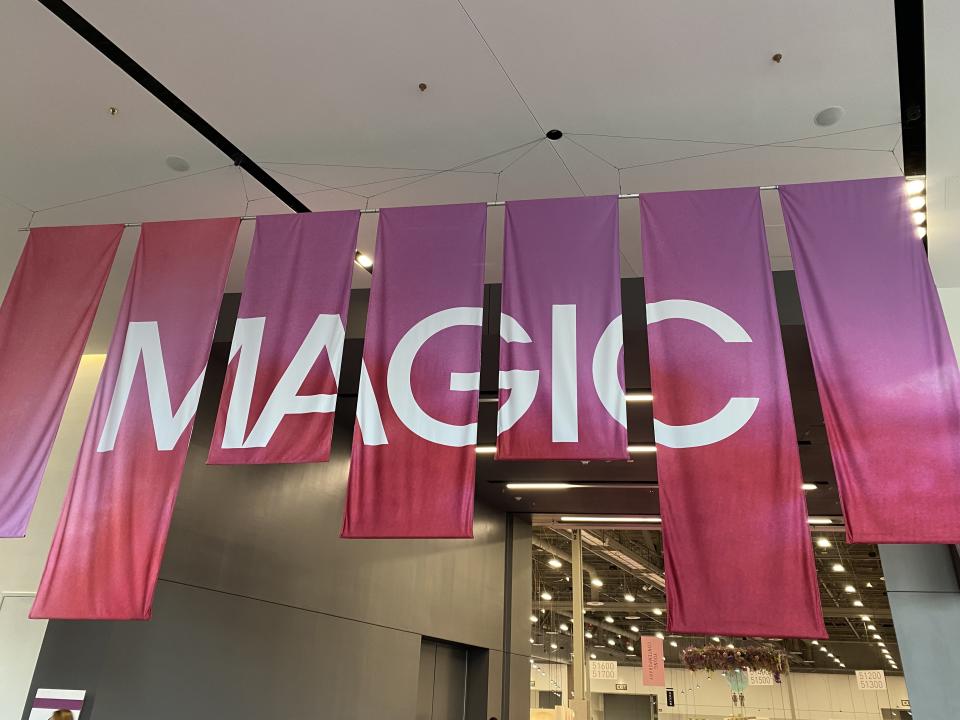
Courtesy
Another big shift is that retailers are stocking fewer items for the loungers who want to hang out in their home office in sweatshirts and joggers. That sounded fun at the beginning of the COVID-19 pandemic but is getting old.
“Yes, retailers are buying closer to season and cautiously, but they are also buying things that people don’t have in their closets,” said Steve Millman, chief brand manager for the contemporary L.A. label Bella Dahl, which has many styles incorporating soft fabrics for comfortable dressing. “They want things that are multipurpose that can take them from morning to evening.”
At LAmade, the sales representatives said they are offering soft dressing but also introducing more gauze, jacquards and structured looks. “People are ready to dress up again,” said Jacqueline Krafka, the company’s design director.
While most retailers were taking a conservative outlook on their open to buys, stores located in resort locations and travel destinations were on a shopping spree.
Timothy Law, who started the Knotty Living apparel and accessories shop eight years ago in St. Michaels, Maryland, was shopping at the relatively new Las Vegas Apparel show that was launched August 2021 at the Expo at World Market Center in downtown Las Vegas.
He and store manager Leah Bell were sifting through the clothing racks of Timing/Lumière, an L.A. label that specializes in high-quality knits and trendy affordable clothing.
The two were seeking luxury-looking products at a reasonable wholesale price. They were particularly intrigued with the brand’s trendy acrylic sweaters that had a cashmere look.
“Last year was a stupid crazy year,” Law said. “And this year, I was going to be happy if we broke even. But it is still good.”
His customer is an affluent individual who lives in nearby Washington, D.C., or New York. (St. Michaels is a picturesque seaside village where many people dock their 80-foot-long yachts or sailboats.)
The typical Knotty Living shopper is a mother between the ages of 40 and 60 whose family has been able to absorb the costs of inflation and is not constrained by a budget. “People are coming to our town for recreation, and they are coming to spend,” Bell said.
That kind of robust business was true for other retailers at the show. Sharon Mautz and her daughter, Kaitlyn Yoniski, have seen explosive growth for their store Vogue Society Boutique in Sarasota, Florida.
When COVID-19 hit, they closed their 1,200-square-foot store for one year and concentrated on online sales. But last November, they opened a 3,700-square-foot boutique where a Louis Vuitton store had been located at The Mall at University Town Center. “We’ve noticed a shift between online buying and coming into the store,” Yoniski said.
“Our customers are wanting to go out and dress up a bit, but still be casual and comfortable at the same time,” Mautz added, noting that dresses and blazers were doing well.
Another resort-oriented retailer was Toni Adams, whose Bora Bora store in Mandeville, Louisiana, carries upscale contemporary juniors and missy swimwear and resortwear. Her clients are tourists who frequent the north shore of Lake Pontchartrain and the local river.
“We are optimistic that people are still going to be traveling. We are crossing our fingers that people will continue to go to the lake,” she said.
Still, she was spending a little less this year on merchandise and waiting to fill in orders as needed.
If anyone wanted to hear an optimistic retail story, they should head north to Canada. Because Canada had so many COVID-19 lockdowns, shoppers have been eager to get out and fill their closets with new clothing, retailers said.
“We were on four lockdowns,” said Lisa Lieberman, the owner of two FashionWear stores in Montreal and Toronto, who was shopping at MAGIC. She held up four fingers to emphasize how many times Canadians were on lockdown. “We are seeing the economy pick up, for sure. A lot of people want to come into the store, chat and catch up.”
She said her customers are going to more events and social gatherings, which should continue for a while. For the holidays, she was looking for a lot more sparkle in her merchandise to reflect the average shopper’s mood. “People are dying to shop,” she said. “It’s like they let the horses out of the corral.”
Here are some standout brands from the shows.
Magnolia Pearl
Designer: Robin Brown
Backstory: Robin Brown used to collect her mother’s vintage fabric and create different items from it. One time, she created a purse out of some of that fabric, which attracted the attention of a woman shopping at the same grocery store as Brown. The shopper followed Brown out to the parking lot and asked if she could purchase the handbag. That’s when Brown knew she was onto something. Brown started Magnolia Pearl in Fredericksburg, Texas, in 2002, creating designs with fabrics that are finished and often sun-faded and hand-distressed in India before being cut and sewn there. The result is a bohemian, shabby chic look, with each piece being unique.
Key styles: Brown doesn’t design for any particular season and creates one-size-fits-most pieces. Her flowy dresses, often trimmed with vintage lace, and easy jackets were top sellers. So were T-shirts, some with hand distressing or artistic graphics. One highlight was a fabric jabot, a decorative neck piece that could be worn as a necklace or scarf. They come in layered fabrics artfully formed, often with whimsical touches. Heavily distressed blue jeans were also popular.
Retail prices: Pricing for the collection ranges from $95 to $700. The T-shirts start at $95. Blue jeans sell for $350 to $500 and kimono jackets fetch $700.
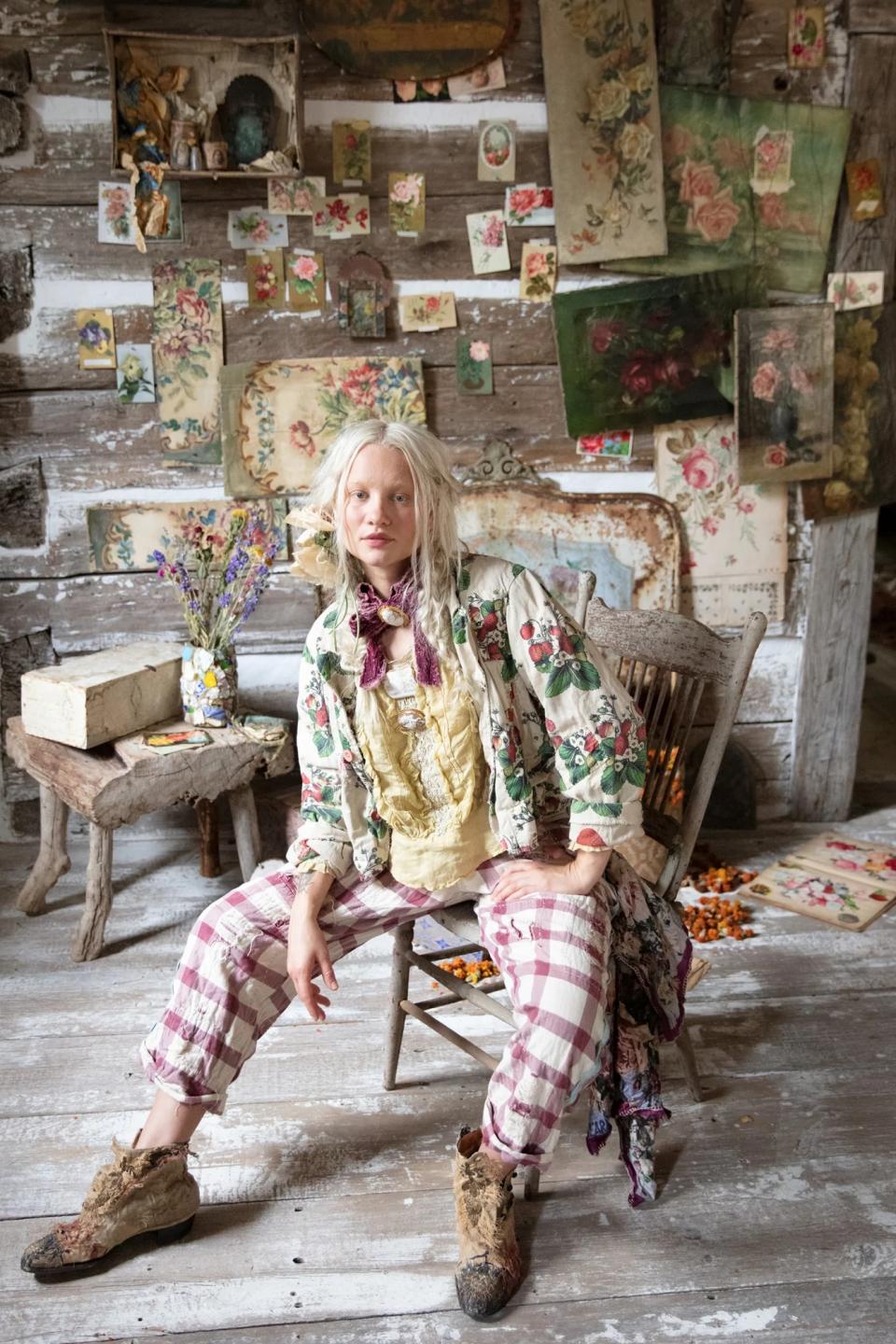
Courtesy
Driftwood
Owner: David Kubresi. The company did not want to reveal the name of its designer.
Backstory: Driftwood jeans was founded in 2012 to bring novel looks, punctuated with artistic embroidery, to the denim world. The company, based in New York, started with basics, then added novelty styles, which expanded to more heavily embroidered floral details with a more arty look. The label is sold in the Sundance catalogue and at Free People as well as online.
Key styles: Popular styles include the Jackie, a skinny jean, a crop jean called the Colette, as well as a flare jean called the Farrah. A high-waisted wide-legged style called the Charlie is also trending. Lots of embroidery is found on most styles. Jumpsuits and overalls with embellishments are top sellers as well as oversized denim jackets.
Retail prices: Prices range from $90 for basic denim to $188 for embroidered denim. Jackets sell for $160 to $170, and sweaters fall into the $98 to $118 range.
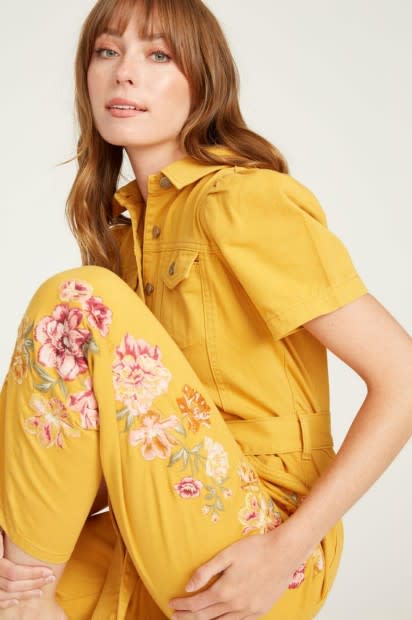
Courtsy
Unique Vintage
Founder/designer: Katie Echeverry
Backstory: Over the past two decades Unique Vintage chief executive officer and founder Katie Echeverry has parlayed her Burbank-area vintage store into a vintage-inspired label of clothing and accessories with an eye toward bringing size-inclusivity to retro looks riffing on the ’20s to the ’90s.
Key pieces: Tapping into the trend for all things ’60s psychedelic, electric-hued matching floral or Smiley sets with flared pants, and mushroom-print Mod shift dresses; ’70s disco sequined rompers and jumpsuits, all in regular and plus sizes.
Retail prices: $60 to $150.
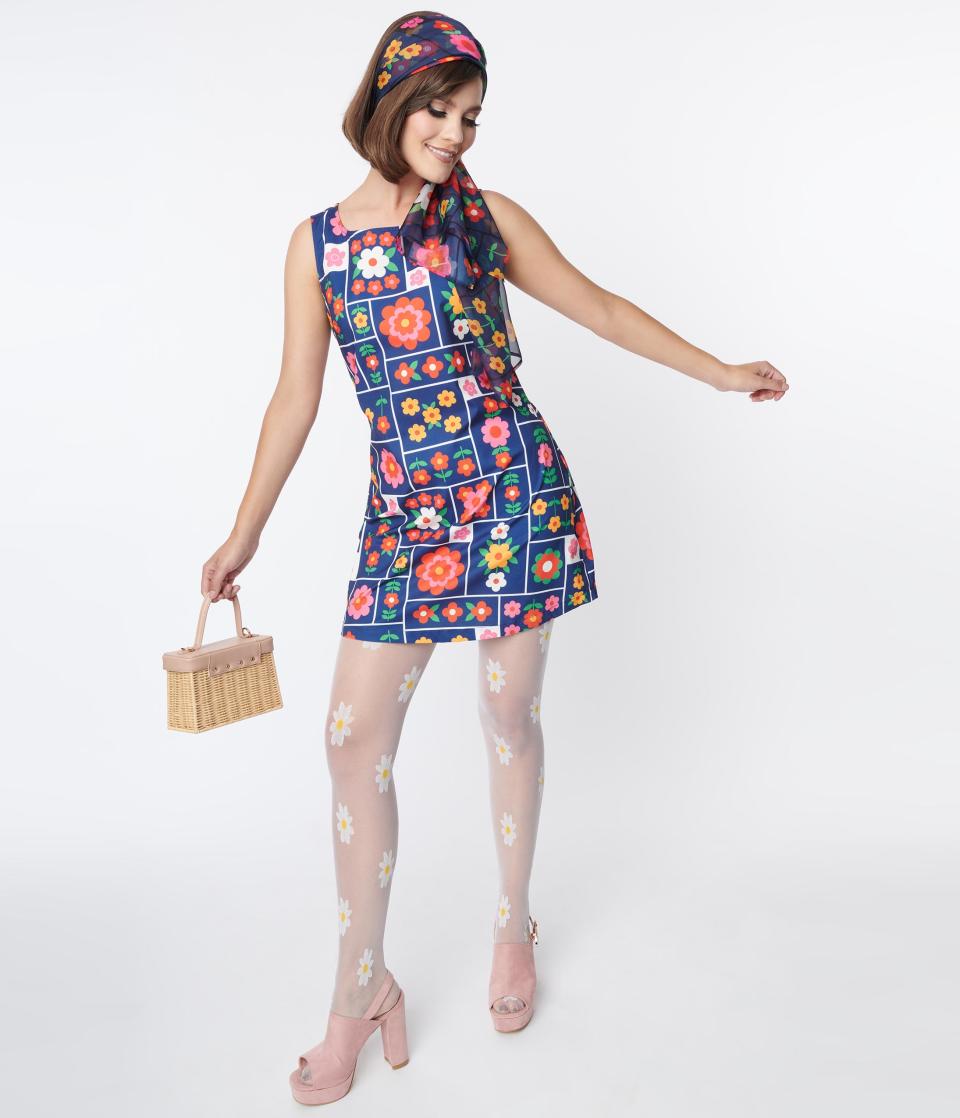
Courtesy image
The Woke Brand
Founder/designer: Kisha Kandeh
Backstory: Kandeh opened her custom patch clothing store in St. Louis six years ago, naming it “Woke” because “It was the state of being in my life at the time,” she said. “I was in the phase of finding out who I was and I wanted to share that on clothes.” With more than 2,000 patches, customers can choose to customize garments; the store aims to bring diversity to creativity and close the gaps in many unspoken topics. Kandeh came to MAGIC to break into the wholesale business, offering retailers the opportunity to place orders for pieces with their own messaging, spelling out the words “hustle hard,” “self-made” or “kind,” for example, and layering on sequined dollar signs, sunglasses and skulls.
Key pieces: Patched military jackets, bombers, T-shirts and hoodies with a ‘90s vibe, including clever hybrid constructions incorporating pieces of denim jackets.
Prices: $45 to $525.
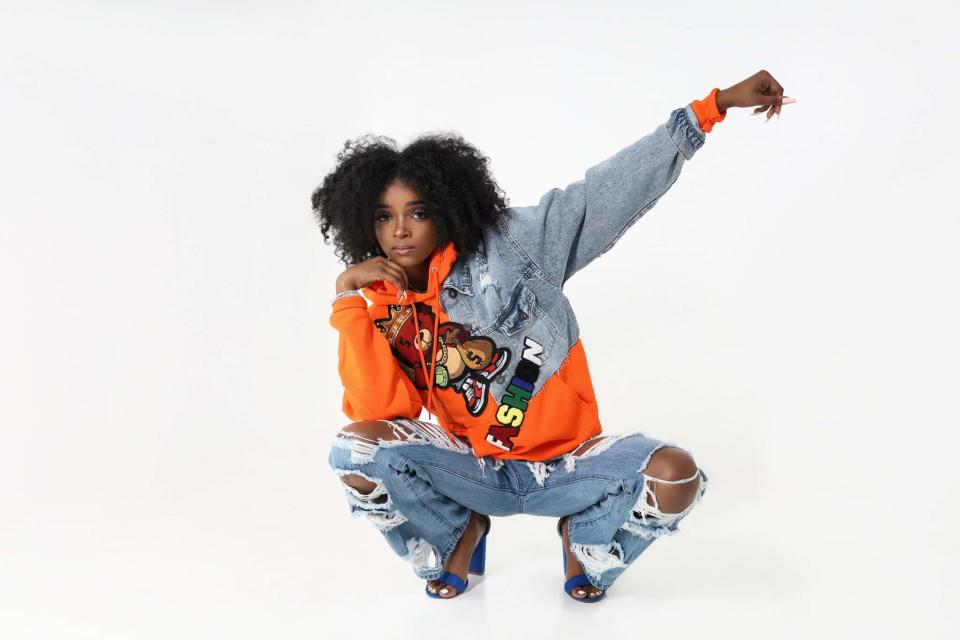
Courtesy
Isla de Oro
Founders/designers: Anneke Barrie and Tali Brown.
Backstory: Both professional surfers, Barrie and Brown debuted their collection at MAGIC, explaining that the “beach-to-bar” lineup was a mix of Old Hollywood and Venice Beach. The two SoCal natives also find inspiration at their grandmothers’ houses, they said, and their pastel “tigre rose” print has the spirit of a West Coast Lilly Pulitzer.
Key pieces: Baggy, boyfriend-style pants with buttons at the ankles that can be undone to create a flare; silky reversible oversized blazers; cropped single button blouses; bra tops and shorts.
Prices: $75 to $185.
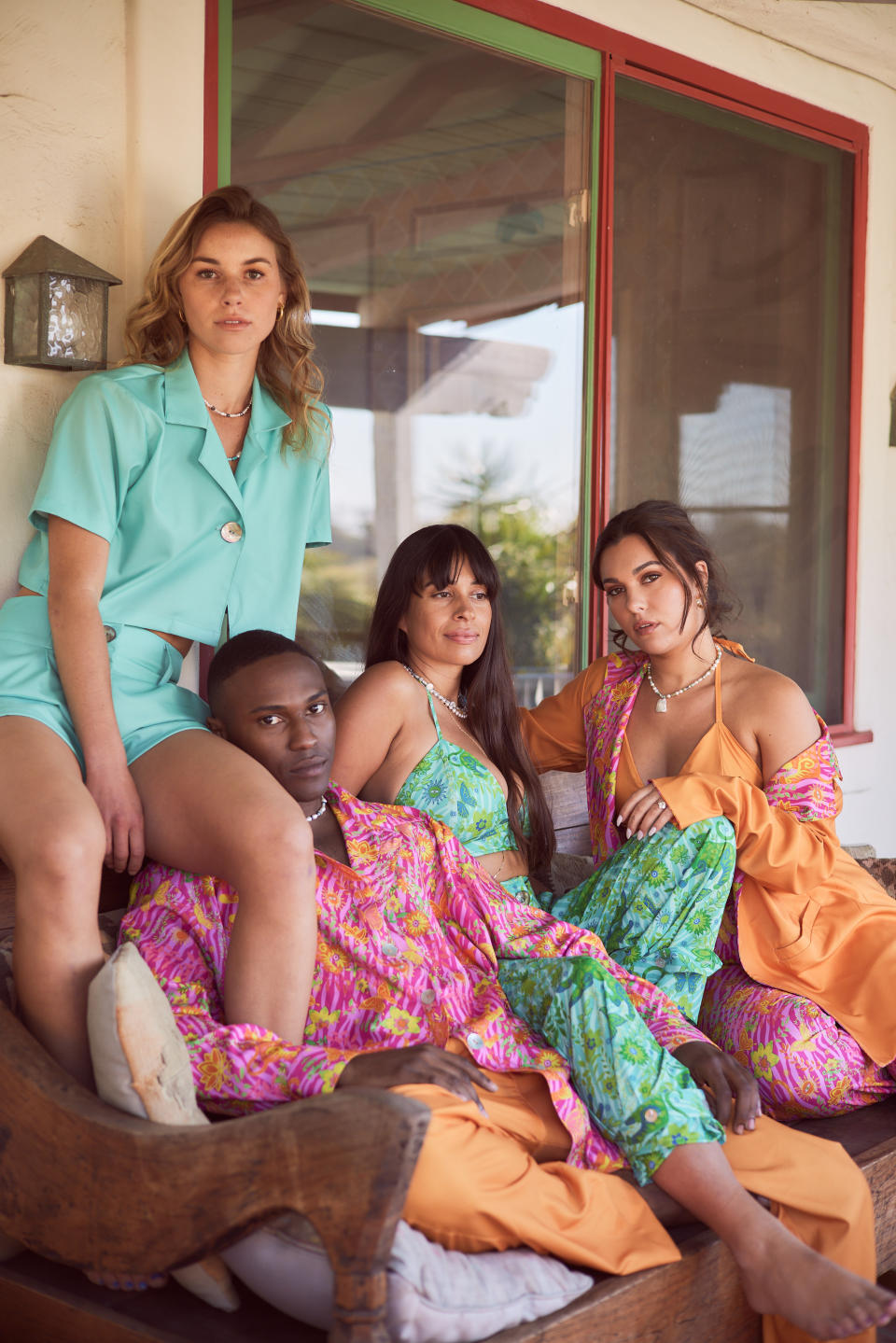
Courtesy
Sign up for WWD's Newsletter. For the latest news, follow us on Twitter, Facebook, and Instagram.

